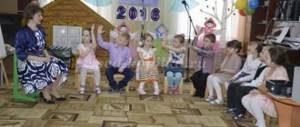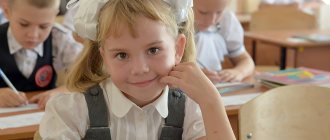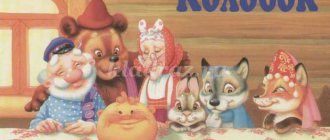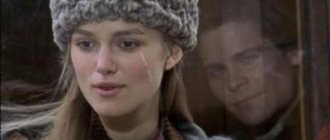Creative music assignments for grades 1-5
Creative tasks, games 1. Task for the development of perception
(information search technique)
Music genre table
A table filled with musical genres is provided.
TASK: count how many times each genre occurs.
When completing a task, the time is recorded.
| ballet | suite | romance | sonata | march | romance | dance | song | song | opera |
| march | symphony | song | suite | romance | symphony | ballad | sonata | ballad | symphony |
| cantata | opera | cantata | ballet | dance | suite | romance | ballet | dance | sonata |
| concert | march | opera | ballad | concert | song | cantata | suite | song | romance |
| sonata | opera | sonata | suite | cantata | opera | march | symphony | sonata | concert |
| cantata | dance | march | cantata | ballad | ballet | ballad | cantata | opera | ballad |
| march | cantata | romance | concert | suite | cantata | suite | ballad | march | sonata |
| cantata | opera | sonata | romance | song | dance | march | symphony | romance | symphony |
| suite | symphony | ballet | sonata | opera | ballad | dance | sonata | cantata | romance |
| opera | ballad | opera | song | cantata | song | ballad | concert | song | concert |
2. Creative task to develop a holistic perception of the image of works of art
To complete this assignment, students receive envelopes with poems on different topics. Music plays (related to the topic); after listening, the children open the envelopes, read and choose a poem that, in their opinion, is in tune with the piece of music played.
3. Creative tasks to develop imagination
—
The schoolchild is invited to express an image in a dance to music: “butterfly”, “cat”, “horse”, “candy”, etc.
—
Students are given a picture depicting a situation; they need to come up with what preceded this situation (its causes) and what will happen in the future. The task can be completed in groups. Then act out these situations.
4.
Composing a musical fairy tale and drawing an illustration for this fairy tale. Then, together with the teacher, a book of original fairy tales is compiled.
5. Creative tasks aimed at improving knowledge of tempo
- use of cards with various drawings depicting movement. After listening to the piece, children pick up a card that matches the tempo of the piece of music;
example cards:
- passing the ball to the music of acceleration and deceleration (with a fast tempo of a piece of music, the ball is passed quickly from hand to hand and vice versa with a slow tempo of music);
- composing a story where characters or objects are subject to agogy (change of tempo) for some reason. At the same time, children can use musical terms related to the tempo of the music (allegro, adagio, presto, andante, etc.).
For example:
My class and I went into the forest. While walking slowly through the forest, we suddenly noticed how quickly a hare ran, and a squirrel slowly jumped... etc.
6. Creative tasks aimed at improving knowledge about the mode as a means of musical expression
—
using cards with dark and light colors. Children determine the mode by ear and pick up the card corresponding to this mode. Also, the use of cards depicting different drawings
example:
- complete the given melodic intonation for certain words, observing the modal coloring proposed initially.
7. Creative tasks aimed at improving knowledge about dynamics
—
use facial expressions and gestures to depict a dynamic character: forte, mezzo forte, piano;
- convey dynamic shades in the drawing through natural phenomena;
- use of a game situation: the leader goes out the door, the class hides the toy. The presenter, upon returning, finds the toy by sound (the louder the class sings, the closer the toy is and vice versa)
8. Vocal improvisation:
—
mini-stories (the teacher reads or recites the plot, children insert their own examples of vocal improvisations in the right places)
example:
The children went into the forest so as not to get lost, they started calling around... (vocal example from the children). In the forest they heard the singing of a cuckoo... and the knocking of a woodpecker. The rain started dripping... And then the clouds went away and the nightingale sang...
9. Rhythmic-motor improvisation
The teacher tells the story, and the children insert their own examples of rhythmic-motor improvisation in the right places.
Example:
— the children gathered for a friend’s birthday. They ran down the stairs... and walked along the street... Arriving at a friend, each of the children congratulated him... Then they danced a waltz (waltz music sounds)... and a polka (polka music)...
- These are trees in the forest,
The wind blows away the dew.
These are the birds flying
The wings were folded back.
10. Game “Musical Carousel”
Children are seated in groups. The teacher announces the topic, 1 group remembers one of the songs on this topic, sings 1-2 lines and passes the baton to another group. Time to think - 15 seconds. If some group does not respond, then they leave the carousel. The group that remains wins.
Themes of the “musical carousel”
- songs that mention cities,
- water, in any condition,
- relatives (mom, dad, etc.)
- musical instruments.
11. Memory development game “Musical Suitcase”
Each student, starting with the teacher, pronounces the phrase: “I take a suitcase with me and put in it...”, for example, musical instruments. Each time, repeating the previous instrument, he places his own.
— Teacher: I take a suitcase with me and put a flute in it
— 1 student: I take a suitcase with me and put a flute and violin in it
— 2nd student: I take a suitcase with me and put a flute, violin and piano in it
— 3rd student: I take a suitcase with me and put a flute, violin, piano and guitar in it
etc.
As students pronounce their instrument, they imitate playing that instrument.



